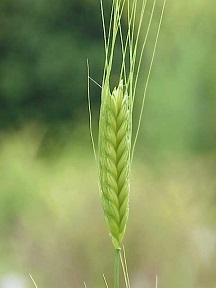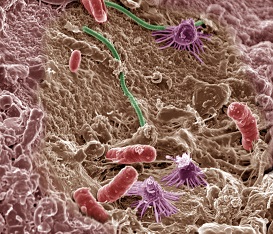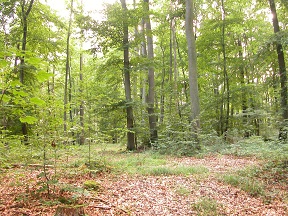Science rests on reductionism: the reduction of complex issues to digestible bits. From there, researchers try to piece together the bigger picture. But in the life sciences we now see a movement towards holism: the concept that life’s manifestations can only be understood from the whole. How can we reconcile both concepts?
This is a shortened passage from the book Naturally! Of course. How nature never stops surprising us (in Dutch), by Alle Bruggink and Diederik van der Hoeven. The book will be published in November 2019. This is the first of two articles on holism.

For ages, the laws of heredity have remained a mystery to mankind. We did make use of them: our present wheat and our chicken are a far cry from the original grass and the old bird that lived in the woods. But this was a trial-and-error process. For instance by keeping the thickest seeds apart for the sowing season next year. Until the Austrian-Czechian monk Gregor Mendel reduced the issue to its most simple question. By just looking at the change in one single property. The flower’s colour, or its form. His laws have become famous. The whole edifice of biology rests on his shoulders. Without Mendel no knowledge of chromosomes and DNA, no biotechnology. Reductionism in pure form. And it brought us a lot.
From reductionism to holism in modern science
But a century and a half after his discoveries, the biological sciences move in part into precisely the opposite direction: towards holism instead of reductionism. It is as if we had to understand the simplest situations first, before we could acquire a deeper insight into the complex mechanism of living nature. The present tendency towards holism echoes a movement that had its heydays around 1900. According to this ‘philosophy of life’, social and biological phenomena can only be understood in their contexts. The whole more important than the constituent parts. The problem is then, that this context can no longer be fathomed by scientific methods, but only by intuition. However, in the past century and a half we have learned that these two are not mutually exclusive. There are many intermediary steps between ‘part’ and ‘whole’, and we have mastered the skills needed to focus on, and understand all these intermediary steps. Will we ever arrive at an understanding of the whole, from the sum of its parts? Or do we witness a wave-like movement, in which at times we judge that we can fathom nature best by approaching it as a whole, and at times make breakthroughs on details?

Let’s have a look at the changing perspective on a complex whole, a forest. In school we were taught that forests consist of trees and these again of ‘constituents’. Wood fibres that lend strength and stiffness to the tree, arteries for the transport of water and nutrients to the leaves; and arteries for the transport of sugars in the opposite direction, from the leaves to the roots, allowing these to grow. The three main components of wood are: cellulose, that lends stiffness to the tree, lignin as a filler, and hemicellulose as a binding agent. Three components with different chemical makeups.
The intelligence of plants
Then all of a sudden, we may learn from internet that trees can ‘talk’ to each other. If they are attacked by voracious insects, they emit volatile compounds that warn their neighbours for the imminent danger. And they also have the ability to communicate through the soil: through the ‘microbiome of the soil’. The ensemble of microorganisms around their roots. Nowadays, trees do not end any more in their root-hairs. They extend much further away: through the fungi of the microbiome, that live around and partly even within the root-hairs. Therefore, trees can draw water and nutrients from much further than just through their proper roots. And particularly, they draw information from this system.
The tree rewards these fungi, the so-called mycorrhiza, with nutrients (sugars) that it supplies to them, at times as much as 20% of all sugars produced by the tree. One of the useful services lent by mycorrhiza is communication: through this sub-surface system trees can emit and receive signals, ‘talk’ in terms of the animal world. We might to have to extend our definition of the tree, maybe even to the wood as a whole. This too, might be a ‘living creature’ that can be the object of scientific studies. Plant biologist Suzanne Simard of the University of British Columbia coined the term ‘wood world web’. Forest ranger Peter Wohlleben looks upon forests as resilient social communities. And Stefano Manusco of the International Laboratory of Plant Neurobiology even attributes intelligence to plants. They have many more senses than we have, he says. With them, they pick up signals from their environment, like the threat of vermin. And with them they can also emit signals.

The value of holism
Science supplies us with another perception of nature very fast now. Trees and plants no longer just represent the sum of chemical reactions. Our present view on nature is multi-layered. And each component relates to other layers. The tree with its system of arteries still exists, and it still is made up predominantly from cellulose, lignin and hemicellulose. But at the same time, it is a component of a forest that appears to have many characteristics of a living creature. As we better learn to know this forest, we get a deeper insight into the way it gives life to the tree. In other words: the forest defines the tree to the same degree as the other way around.
Within living creatures we see much of the same. Again and again, researchers try to establish causes of phenomena. And they increasingly find that living creatures are very complex. In some instances, ‘causes’ do not result in effects, and at times we witness ‘effects’ of which we cannot establish the causes. After having discovered DNA, we thought that all properties of the individual are determined by its DNA. But that is far from the truth. RNA, the messenger molecule, often has a decisive influence on the individual’s appearance. And proteins produced by the DNA/RNA complex in their turn influence the development of that very DNA, including the production of mutations. Environmental factors, important as well. Quite well-known is the effect of human eating patterns (clearly an environmental factor) on the individual’s length. Just 70% of a property like muscle strength (one would think: clearly a result of heredity) is caused by DNA. Intelligence just 50%. Living organisms constitute a ‘whole’ that we cannot fathom yet through reductionism, i.e. by adding up its constituent parts.
Here old crafts, work done from holistic knowledge, keep their value well into our modern times. Star chefs know precisely how to manipulate their raw materials in order to arrive at a tasteful dish. Even without any knowledge of microbiology. Farmers have loads of knowledge from experience, required to arrive at the highest yield possible. Here, ‘reductionistic’ science is a tool for the advancement of a traditional craft. An enrichment, not a replacement.
Reductionism even in legislation
But some sciences are still dominated by reductionism. The medical science is one of them. Around 1650, we learned to know the healing properties of the bark of the cinchona tree. In the 19th century, science isolated from it the quinine compound, that we subsequently used as a medicine. But why not the bark of the tree? The innovative horticultural company Koppert Cress in Monster (the Netherlands) specializes in the culture of young sprouts, that they call ‘cresses’. Their CEO Rob Baan is of the opinion that these sprouts often have healing effects. But he is not allowed to say so, because according to the law, only medicines have healing effects. And always, these are pure compounds. In other words, reductionism has even penetrated into the law. We do not need to adhere to homeopathy in order to acknowledge this as a limited view. Fruit and young vegetables may have more healing properties than the sum of their ingredients. The whole, more than the sum of its constituent parts.
But wouldn’t we be able to approach such a whole if we assemble extremely many data? Complex mixtures of medicines that resemble vegetal extracts but with new healing properties? Don’t forget that there is a tsunami of data descending on us, from the medical profession too. All results of research are being recorded, as are all successful therapies. According to Yuval Noah Harari in his book ‘Homo Deus’, dataism is the religion of our times. ‘I a world drowned in irrelevant information, clarity is power,’ he writes. And indeed, we can arrive at increasingly better diagnoses through data analysis. Cures may follow. A bit more difficult. But that may not be impossible, we have come quite a distance along that road already.
Holistic insight through data analysis
Let’s not forget that there is an area already where data analysis lends us an insight into nature’s complexity. That is the analysis of the microbiomes of the soil and of our guts. DNA analysis of the soil has made it clear that there are many organisms in there, still unknown to us. Probably, many of them have a function in feeding the crop. And all of a sudden we learn that our intestinal flora, the ensemble of microorganisms in our guts, has a major influence on our health. Many unknowns here as well. Data analysis will lend us many more discoveries in this area. And such discoveries might also inspire the search for new medicines. Or even better: combinations of medicines, for we now leave behind us the times in which pure molecules, however complex, lead to breakthroughs in new medication.
Nature has a logic of its own: in it, the whole is more than the sum of its constituent parts. Cook, farmer and tree knew that already. As science and the society better learn to understand nature’s logic, we will better be able to deal with nature. We will ever better be able to handle it from an insight into natural relationships. We will explore nature’s bounties using biological tools. Nevertheless, that will run into resistance. Pharmaceutical companies are strongly geared towards that single compound with healing properties; the same holds for pesticide producers. Partly they are even supported by the law, see above. Under the present law for instance, the popular CBD oil cannot be recognized as a medicine, because it isn’t clear which ingredient is responsible for its medicinal properties. But the pressure for holistic solutions is mounting. The step towards an insight into ‘Nature’ in broad sense, including our own bodies, our health and the health of our planet, is still large. And yet, that is the challenge that we face now.
Interesting? Then also read:
Indirect effects, we often ignore them
Respectful treatment of the complexity of biomass
Preservation of chemical complexity in green chemistry
